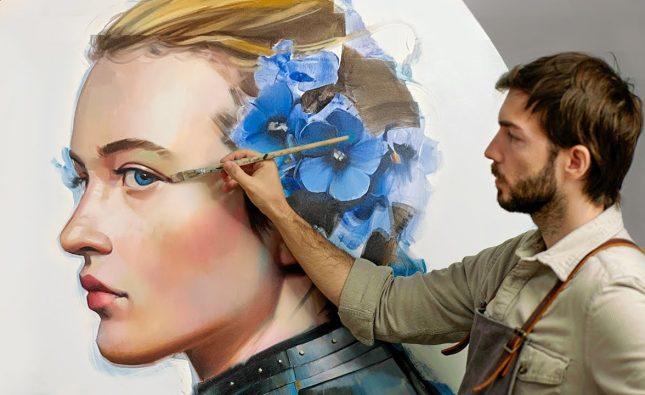
Art has always been a reflection of the times we live in. From the earliest cave paintings to the most recent contemporary art installations, artists have used their creativity to express their thoughts, feelings, and ideas about the world around them. With the rise of digital technology, a new form of art has emerged that is transforming the art world as we know it. In this article, we will explore the rise of digital art and how technology is changing the way we create, view, and experience art.
What is Digital Art?
Digital art is a form of art that uses digital technology to create, manipulate, and display images, sounds, and other forms of artistic expression. It encompasses a wide range of mediums, including digital painting, 3D modeling, animation, video, and interactive installations. Digital art can be created using a variety of tools, including software programs, digital cameras, scanners, and other digital devices.
The Rise of Digital Art
The rise of digital art can be traced back to the 1960s, when artists began experimenting with computer-generated art. However, it wasn’t until the 1990s that digital art began to gain mainstream recognition. With the advent of the internet and the widespread availability of digital tools, artists were able to create and share their work with a global audience.
Today, digital art is a thriving and rapidly growing field. It is being embraced by artists, collectors, and galleries around the world. Digital art is also being used in a variety of commercial applications, including advertising, film, and video games.
How Technology is Transforming the Art World
Technology is transforming the art world in a number of ways. Here are just a few examples:
1. New Tools and Techniques
Digital technology has given artists access to a wide range of new tools and techniques. For example, digital painting software allows artists to create complex and detailed images that would be difficult or impossible to create using traditional painting techniques. 3D modeling software allows artists to create intricate sculptures and installations that can be viewed from any angle.
2. New Forms of Expression
Digital technology has also opened up new forms of artistic expression. For example, interactive installations allow viewers to become active participants in the art, rather than passive observers. Video and animation allow artists to create dynamic and engaging works that can be viewed on a variety of platforms, including social media and mobile devices.
3. New Ways of Displaying Art
Digital technology has also transformed the way art is displayed and experienced. Digital displays allow artists to create immersive and interactive installations that can be viewed in a variety of settings, from galleries to public spaces. Virtual reality and augmented reality technologies allow viewers to experience art in new and exciting ways, blurring the line between the physical and digital worlds.
Conclusion
The rise of digital art is transforming the art world in exciting and innovative ways. With new tools, techniques, and forms of expression, artists are pushing the boundaries of what is possible in the world of art. As technology continues to evolve, we can expect to see even more exciting developments in the world of digital art.










